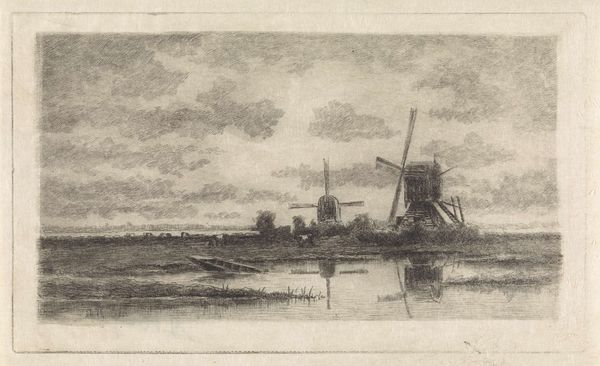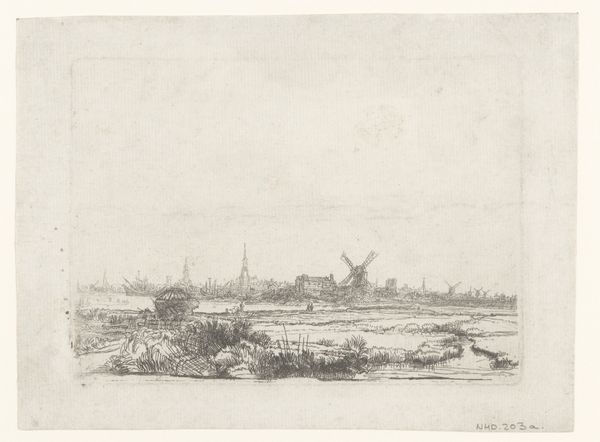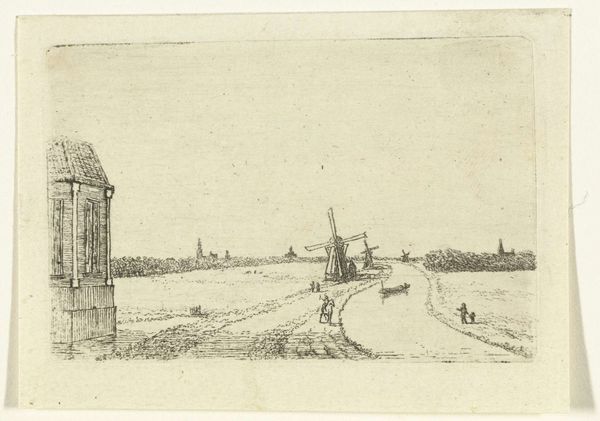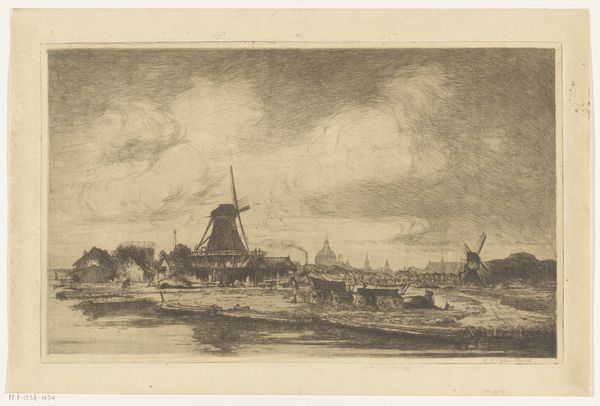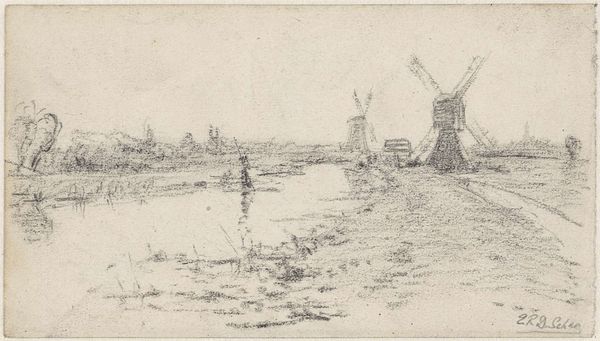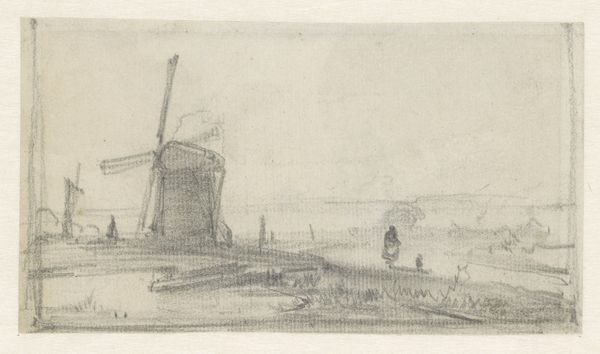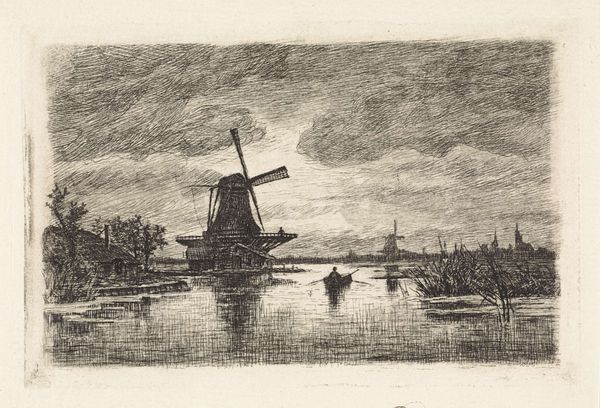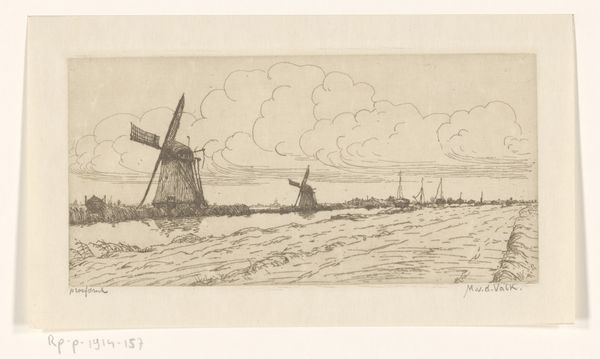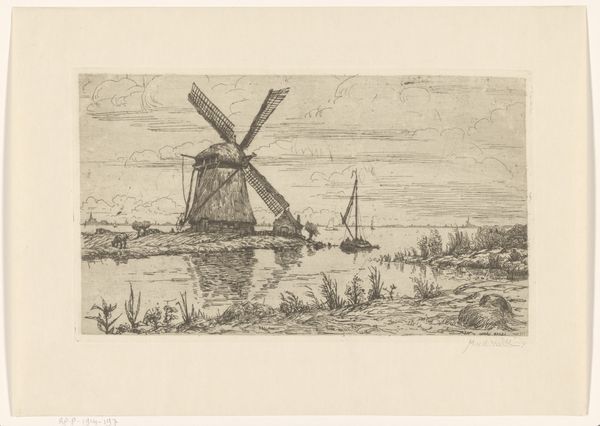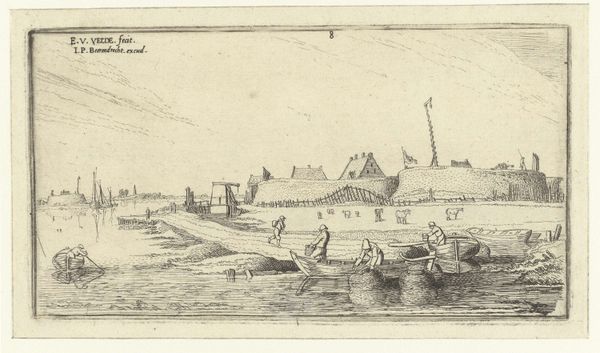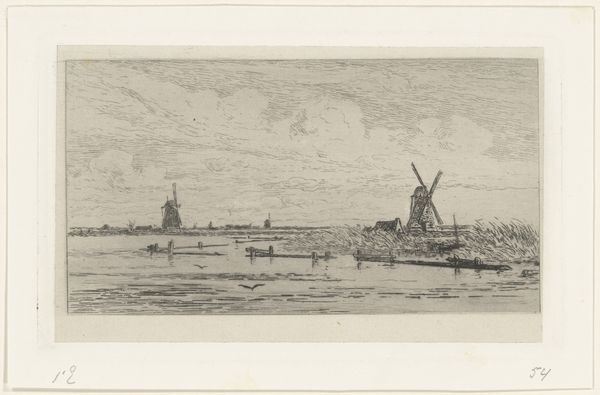
Copyright: National Gallery of Art: CC0 1.0
James McBey created this etching, "Ransdorp", using a metal plate, acid, and ink. The intricate linework, achieved through careful etching and printing, reveals a scene dominated by a windmill, a symbol deeply rooted in Dutch history and its struggle with the natural world. Consider the labor-intensive process of etching. The artist carefully drew into a wax ground, exposing the metal underneath to acid, which bites into the surface creating lines. The plate is then inked, wiped, and pressed onto paper, transferring the image. The quality of line in this print is very fine indeed. The landscape, rendered with delicate strokes, evokes the Dutch countryside, where windmills were both vital for land management, such as pumping water, and served as industrial powerhouses for milling grain. McBey's choice of etching, a technique demanding skill and time, reflects a connection to older traditions of printmaking. These are embedded in the economic life of earlier centuries. In this way, the scene depicts both an image and a process laden with layers of cultural significance.
Comments
No comments
Be the first to comment and join the conversation on the ultimate creative platform.

